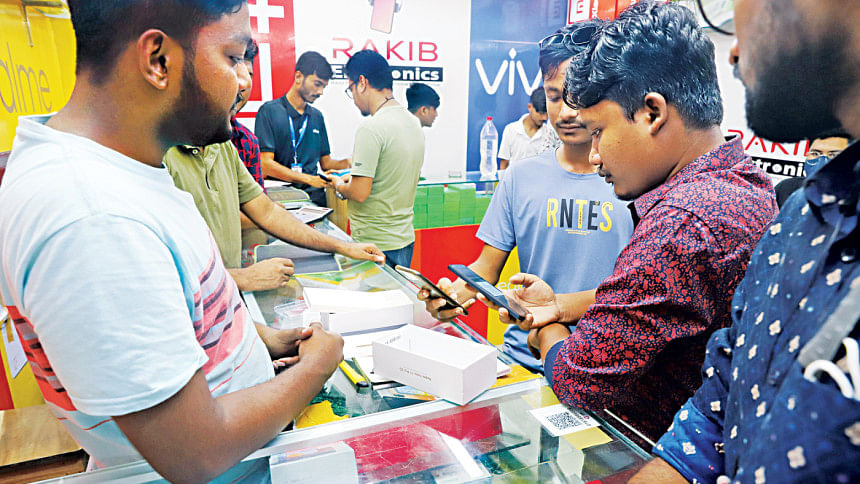Local handset production drops as grey market expands

Handset production in Bangladesh declined significantly in the first quarter of 2025 as the grey market continued to dominate the domestic market.
According to the Bangladesh Telecommunication Regulatory Commission (BTRC), handset production declined by about 10 percent year-on-year in the first quarter to 54.76 lakh units.
But during the January–March period, 4G smartphone production dropped by 9.30 percent to 19.11 lakh units. Feature phone manufacturing also fell by 9.58 percent to 35.31 lakh units during the same period.
Apart from the impact of the grey market, worsening economic conditions and the rising US dollar against the taka also contributed to the decline.
"The grey market now holds almost 40 percent of the smartphone market and has become the main hurdle for the growth of the local industry," said Rizwanul Haque, vice-president of the Mobile Phone Industry Owners' Association of Bangladesh (MPIOAB).
He noted that the influx of grey market devices—often unofficial and counterfeit—continues to undermine local manufacturers.
According to the association, the government has recently increased taxes on locally manufactured mobile phones. While Pakistan imposes around 20 percent duty on mobile production, Bangladesh has the highest tax rate in the region, at approximately 35 percent.
The local mobile phone industry also faces several structural challenges: high dependency on imported components like chips, displays, and batteries, which increases production costs.
Besides, there is a heavy tax and tariff burden on raw materials, which inflates per-unit pricing, and an unstable foreign exchange market, where US dollar volatility disrupts financial planning and import payments.
Over the past three years, the industry has struggled to survive due to a shortage of letters of credit amid the US dollar crisis and rising exchange rates. Sales have also declined, while the growing grey market continues to threaten the viability of local manufacturing.
Notably, handset production fell in 2023—marking the first decline since domestic manufacturing began in 2017.
Industry insiders say the lack of full implementation or omission of key features in the National Equipment Identity Register (NEIR) system has weakened efforts to curb the grey market. NEIR was launched by the BTRC to prevent the illegal import and use of mobile handsets, combat phone theft, and block unauthorised and unregistered devices.
On November 25, 2020, the BTRC signed a Tk 29 crore agreement with the Synesis-Radisson-Computer World consortium for the installation and operation of NEIR. A trial run began in July 2021.
During the trial, authorities found that millions of mobile phones in use were unauthorised, raising concerns that strict enforcement could lead to widespread public dissatisfaction. A technical issue also emerged when hundreds of feature phones were found sharing a single IMEI number.
The unchecked growth of the grey market is depriving the government of taxes and VAT while undermining investments by companies that have established local manufacturing plants.
Though a key feature—the blocking of unauthorised handsets—was initially launched in October 2021, it triggered frustration among manufacturers. Now, the BTRC has floated a new tender to revive the NEIR system with the full feature set, including the ability to block illegal phones.

 For all latest news, follow The Daily Star's Google News channel.
For all latest news, follow The Daily Star's Google News channel. 



Comments